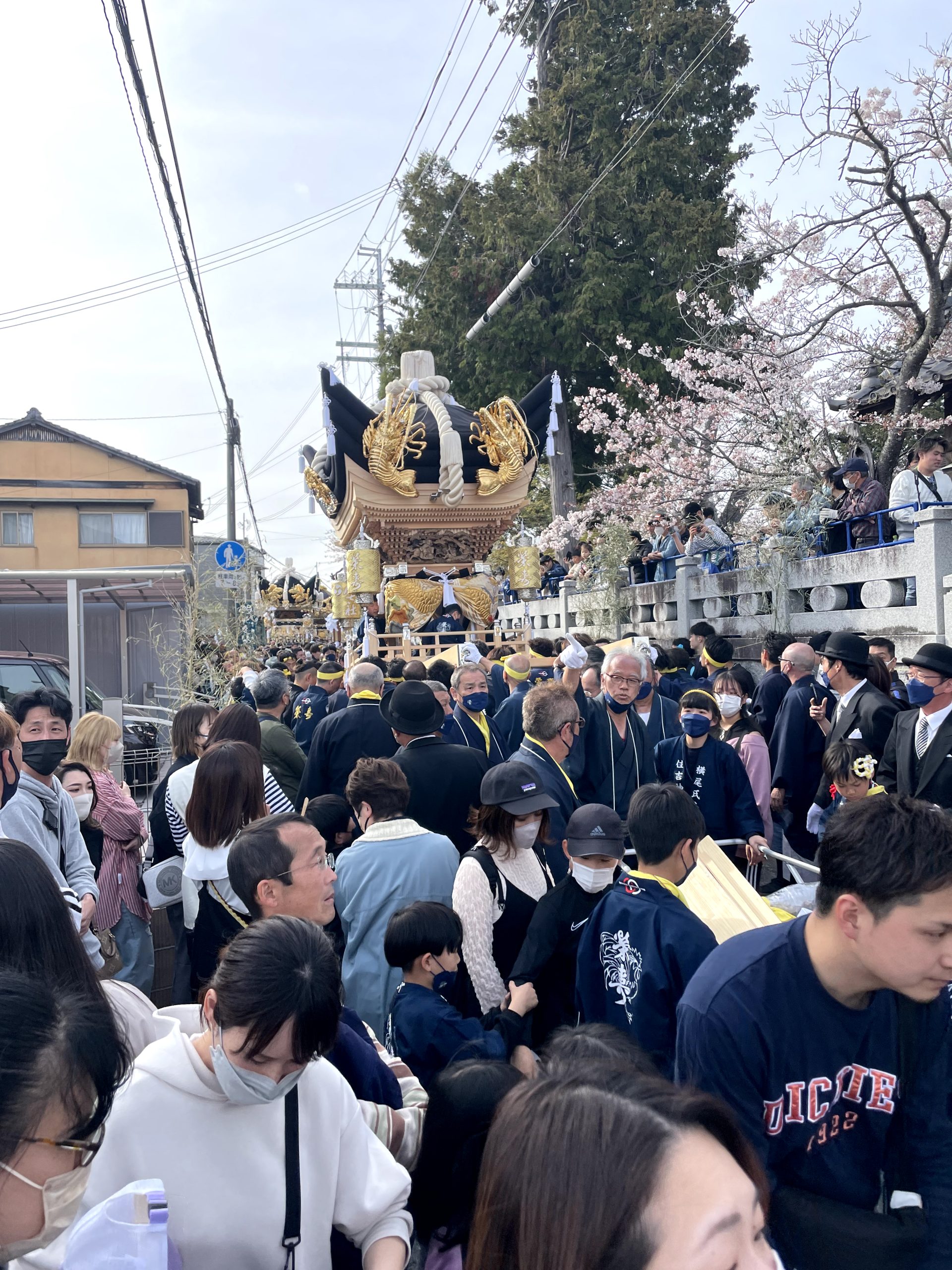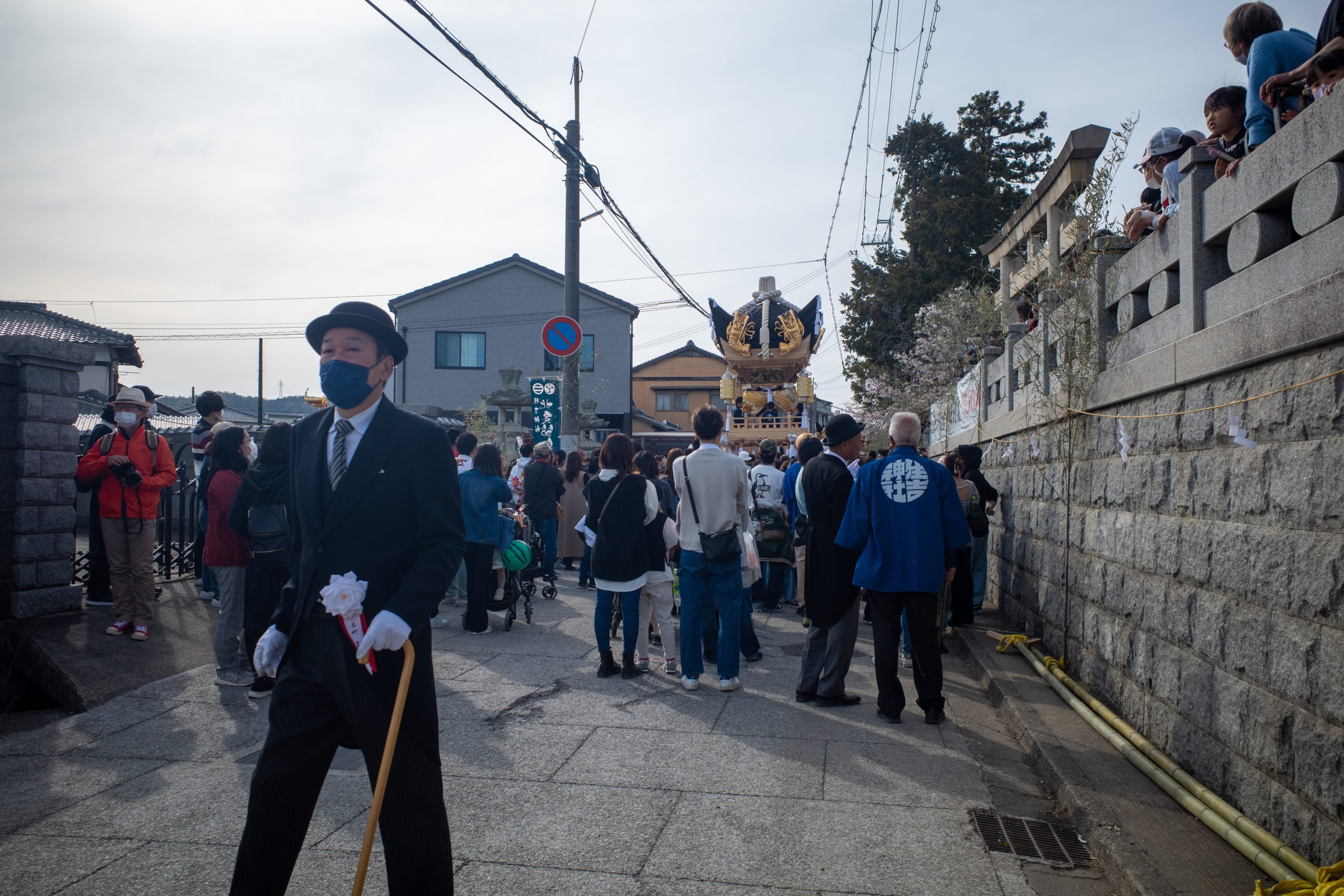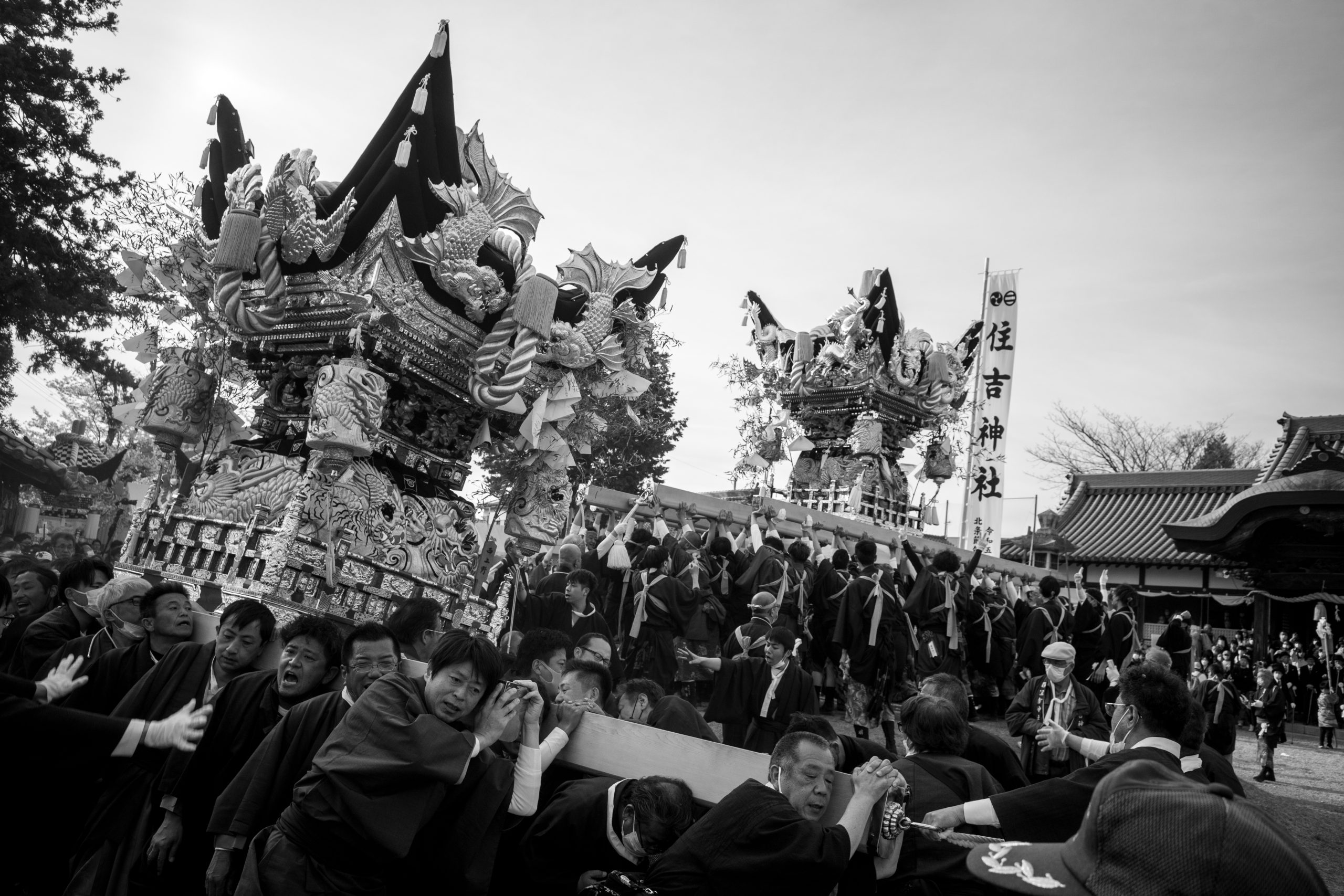Hojo Sekku Festival

2/April/2023
There is a place called Kasai City, about 20 minutes by car from my parents’ home in Himeji.
This Kasai City is adjacent to the northeast of Himeji City, and the center is called Hojo, where there is a Hojo Sekku Festival.
There are many autumn festivals in Harima, centered on Himeji City, but in this Hojo, festivals are held in the spring season when cherry blossoms bloom. A large mikoshi (portable shrine) called a yatai is loaded with drums and paraded. In Himeji, it is now called a mikoshi yatai and looks very similar to a mikoshi. On the other hand, at this Hojo festival, there are yatai called futon yatai, and the roof part is literally made of piled up futons.
Also, the people who are called “neriko” and “kakite” are often doing mawashi at festivals in Himeji nowadays. Mawashi is also mainstream in my area and wear a half coat on top. This Sekku festival is different, and they wear kimono and have a festival. The overall impression is that it is slightly more elegant than the rough image of Himeji. However, even if you say elegant, it is different from Kyoto’s festival, and it is not offset by the rustic smell.
Another thing that catches my eye is that there are two or three men wearing silk hats, morning coats and sticks mixed with the katsuki’s kimono. They are probably representatives of the district. Western formal wear is mixed with Japanese, but I didn’t feel any strangeness in my eyes. Their appearance was pushing the festival up one notch higher than those in kimono, and they were playing a role in tidying up the festival. I had a camera and was taking pictures of the festival, but my lens was more attracted to the elderly men in silk hats and morning coats than to the yatai and those in kimono.


I walked around the festival for about two hours until the yatai entered the shrine.